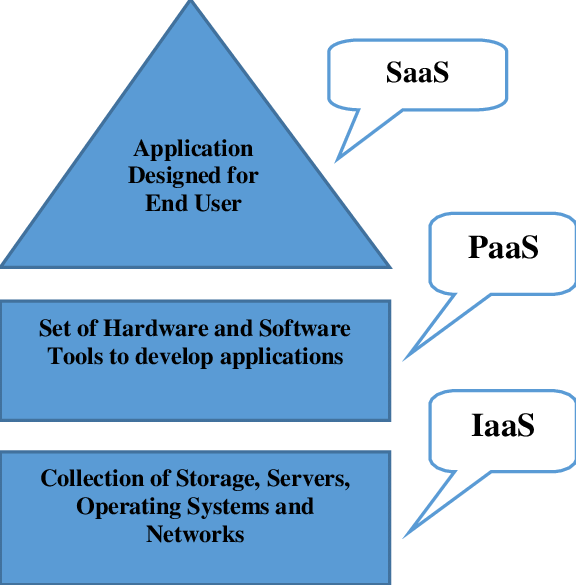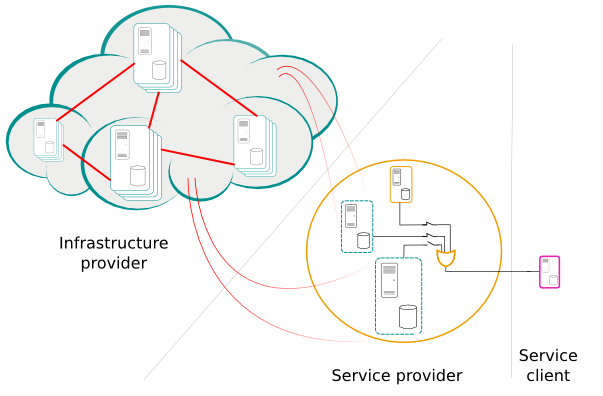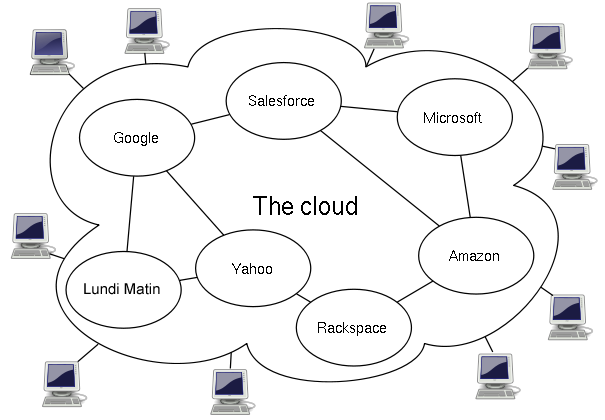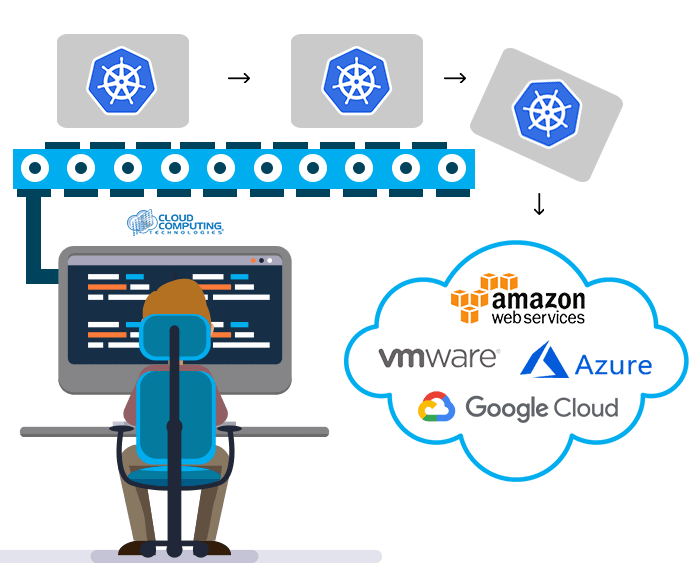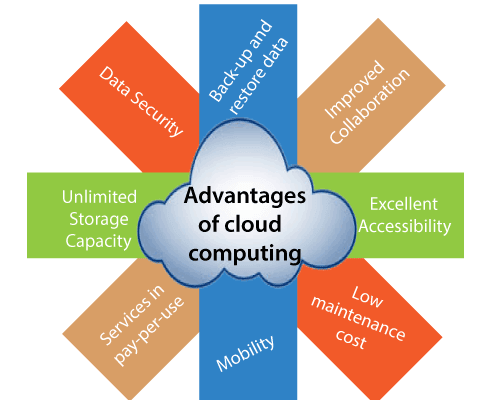Download top and best high-quality free Cloud Computing PNG Transparent Images backgrounds available in various sizes. To view the full PNG size resolution click on any of the below image thumbnail.
License Info: Creative Commons 4.0 BY-NC
Cloud computing refers to the on-demand availability of computer system resources, particularly data storage (cloud storage) and computational power, without the need for the user to actively manage them. Functions in large clouds are frequently dispersed over numerous locations, each of which is a data center. Cloud computing relies on resource sharing to achieve coherence and economies of scale, often through a “pay-as-you-go” approach, which can assist reduce capital costs while potentially exposing customers to unanticipated running costs.
The earliest notions of time-sharing were popularized in the 1960s by RJE (Remote Job Entry), a name that was largely associated with big companies like IBM and DEC. By the early 1970s, full-time-sharing solutions were available on systems including Multics (on GE hardware), Cambridge CTSS, and the earliest UNIX ports (on DEC hardware). However, the “data center” approach, in which customers submitted jobs to operators to perform on IBM mainframes, dominated.
Telecommunications firms began offering virtual private network (VPN) services with equivalent quality of service but at a cheaper cost in the 1990s, replacing dedicated point-to-point data connections. They might make better use of total network capacity by moving traffic as needed to balance server use. They started using the cloud symbol to mark the boundary between what the provider was responsible for and what the users were responsible for.
This border was extended by cloud computing to include all servers as well as network equipment. Scientists and technologists investigated ways to make large-scale computing power available to more people through time-sharing as computers grew more widely distributed. They worked with algorithms to prioritize CPUs and boost efficiency for end users by optimizing the infrastructure, platform, and apps.
Amazon Web Services was founded in July 2002 with the purpose of “enabling developers to construct new and entrepreneurial applications on their own.” Amazon launched its Simple Storage Service (S3) in March 2006, followed by its Elastic Compute Cloud (EC2) in August of same year. These products were the first to use server virtualization to provide IaaS at a lower, on-demand cost.
Google published a beta version of Google App Engine in April 2008. The App Engine was a PaaS (one of the first) that provided fully maintained infrastructure and a deployment platform for customers to construct web apps using standard languages and technologies like Python, Node.js, and PHP. The idea was to minimize some of the administrative work associated with an IaaS model while also establishing a platform on which customers could quickly install and expand apps to meet demand.
NASA’s Nebula became the first open-source software for building private and hybrid clouds, as well as cloud federation, in early 2008, according to the RESERVOIR European Commission-funded initiative.
By mid-2008, Gartner saw cloud computing as having the potential to “shape the relationship between IT service consumers, users, and sellers,” noting that “organizations are shifting from company-owned hardware and software assets to per-use service-based models,” with the “projected shift to computing… resulting in dramatic growth in IT products in some areas and significant reductions in other areas.”
The Cluster Exploratory initiative, launched by the National Science Foundation in 2008, funds university research that uses Google-IBM cluster technology to analyze huge volumes of data.
In 2009, the French government proposed Project Andromède, a ,285 million project to develop a “sovereign cloud” or national cloud computing. Cloudwatt was shut down on February 1, 2020, after the program failed miserably.
Download Cloud Computing PNG images transparent gallery.
- Cloud Computing Technology PNG Images
Resolution: 1457 × 470
Size: 168 KB
Image Format: .png
Download
- Cloud Computing PNG Free Image
Resolution: 980 × 830
Size: 18 KB
Image Format: .png
Download
- Cloud Computing Technology PNG Clipart
Resolution: 2387 × 2387
Size: 118 KB
Image Format: .png
Download
- Cloud Computing Technology
Resolution: 479 × 500
Size: 144 KB
Image Format: .png
Download
- Cloud Computing Technology PNG File
Resolution: 1000 × 666
Size: 28 KB
Image Format: .png
Download
- Cloud Computing PNG
Resolution: 973 × 703
Size: 336 KB
Image Format: .png
Download
- Cloud Computing Technology PNG Pic
Resolution: 754 × 630
Size: 291 KB
Image Format: .png
Download
- Cloud Computing Technology PNG Photo
Resolution: 860 × 980
Size: 38 KB
Image Format: .png
Download
- Cloud Computing Technology PNG Photos
Resolution: 931 × 821
Size: 20 KB
Image Format: .png
Download
- Cloud Computing Technology PNG
Resolution: 744 × 516
Size: 186 KB
Image Format: .png
Download
- Cloud Computing PNG Images HD
Resolution: 980 × 734
Size: 28 KB
Image Format: .png
Download
- Cloud Computing Transparent
Resolution: 1757 × 746
Size: 21 KB
Image Format: .png
Download
- Cloud Computing Connection PNG Pic
Resolution: 576 × 585
Size: 21 KB
Image Format: .png
Download
- Cloud Computing Connection PNG Photos
Resolution: 504 × 512
Size: 7 KB
Image Format: .png
Download
- Cloud Computing Technology Transparent
Resolution: 511 × 295
Size: 9 KB
Image Format: .png
Download
- Cloud Computing Background PNG
Resolution: 700 × 465
Size: 121 KB
Image Format: .png
Download
- Cloud Computing PNG Images
Resolution: 512 × 512
Size: 9 KB
Image Format: .png
Download
- Cloud Computing PNG Image File
Resolution: 980 × 982
Size: 25 KB
Image Format: .png
Download
- Cloud Computing Connection PNG File
Resolution: 603 × 396
Size: 53 KB
Image Format: .png
Download
- Cloud Computing Connection PNG Image
Resolution: 605 × 420
Size: 199 KB
Image Format: .png
Download
- Cloud Computing No Background
Resolution: 700 × 584
Size: 22 KB
Image Format: .png
Download
- Cloud Computing PNG Background
Resolution: 1040 × 783
Size: 19 KB
Image Format: .png
Download
- Cloud Computing PNG Clipart
Resolution: 800 × 500
Size: 259 KB
Image Format: .png
Download
- Cloud Computing PNG Image HD
Resolution: 459 × 400
Size: 11 KB
Image Format: .png
Download
- Cloud Computing Connection PNG Images
Resolution: 512 × 512
Size: 12 KB
Image Format: .png
Download
- Cloud Computing Connection PNG Photo
Resolution: 2262 × 2048
Size: 424 KB
Image Format: .png
Download
- Cloud Computing PNG Photos
Resolution: 1280 × 670
Size: 326 KB
Image Format: .png
Download
- Cloud Computing PNG HD Image
Resolution: 459 × 400
Size: 14 KB
Image Format: .png
Download
- Cloud Computing Connection PNG
Resolution: 500 × 400
Size: 18 KB
Image Format: .png
Download
- Cloud Computing Connection PNG Cutout
Resolution: 512 × 512
Size: 13 KB
Image Format: .png
Download
- Cloud Computing PNG Cutout
Resolution: 512 × 512
Size: 16 KB
Image Format: .png
Download
- Cloud Computing PNG Photo
Resolution: 512 × 512
Size: 16 KB
Image Format: .png
Download
- Cloud Computing PNG Image
Resolution: 512 × 512
Size: 10 KB
Image Format: .png
Download
- Cloud Computing PNG Picture
Resolution: 920 × 810
Size: 355 KB
Image Format: .png
Download
- Cloud Computing Connection
Resolution: 512 × 512
Size: 26 KB
Image Format: .png
Download
- Cloud Computing Connection PNG Clipart
Resolution: 512 × 512
Size: 16 KB
Image Format: .png
Download
- Cloud Computing Technology PNG Cutout
Resolution: 2297 × 1823
Size: 593 KB
Image Format: .png
Download
- Cloud Computing Technology PNG HD Image
Resolution: 2328 × 1774
Size: 326 KB
Image Format: .png
Download
- Cloud Computing
Resolution: 550 × 358
Size: 55 KB
Image Format: .png
Download
- Cloud Computing Technology PNG Picture
Resolution: 529 × 505
Size: 38 KB
Image Format: .png
Download
- Cloud Computing Connection Transparent
Resolution: 452 × 452
Size: 10 KB
Image Format: .png
Download
- Cloud Computing PNG File
Resolution: 623 × 265
Size: 23 KB
Image Format: .png
Download
- Cloud Computing PNG Pic
Resolution: 751 × 639
Size: 343 KB
Image Format: .png
Download
- Cloud Computing Technology PNG Image
Resolution: 1940 × 1814
Size: 355 KB
Image Format: .png
Download












